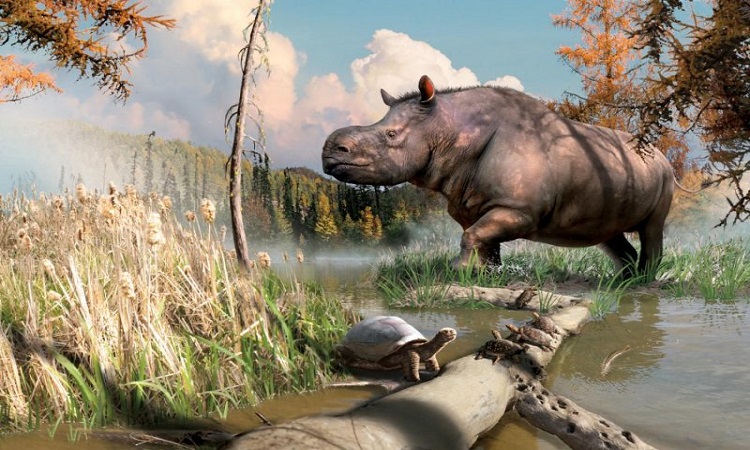A team of researchers says they have identified the remains of a former rhino that roamed the Yukon lands in Canada 8 million years ago.
In 1973, a teacher named Joan Hodgins took her students on a hike near Whitehorse, in the Canadian territory of Yukon. Analyzing the soil, she came across small fragments of fossil teeth. At the time, they could not be identified. They had since been resting at the Natural History Museum at the University of Colorado Boulder.
A former rhinoceros
But since then, the analysis techniques have evolved. The teacher, still attached to these fossils, recently participated in their study. Surprisingly, these small teeth probably belonged to a former cousin of the rhinoceros, an imposing animal roaming the Canadian forests about 8 million years ago.
It’s a first. Before this discovery, paleontologists had found no fossil vertebrates of this period in the region.
“In the Yukon, we have whole trucks loaded with ice-age mammal fossils, such as woolly mammoths, ancient horses and ferocious lions,” says Grant Zazula, co-author of the study. But this is the first time we have evidence of ancient mammals, such as rhinos, prior to the ice age.A different environment at the time
At that time, there was a passage between Russia and Alaska (Bering Strait). Palaeontologists had imagined that rhinoceroses could actually have taken this path. But until now, the proofs of their presence were missing. Largely because the Yukon Territory is not very conducive to fossil preservation.
The teacher and her students were in the right place at the right time. This incredible discovery allows us today to better understand the environment that reigned at the time in the region.
In addition to the rhinoceros teeth, the researchers also explain finding fossils of ancient turtles, an old cervid and old pike. Which suggests that the surroundings were visibly warmer and wetter than today.
Regarding the rhinoceros, difficult to imagine the animal on the simple basis of these few fragments of teeth. But the researchers suggest that it could measure about two meters high for about three meters long. He was probably feeding on leaves and had no horn on his muzzle.
These animals probably died out about 4 million years ago as temperatures cooled. The ice covering the ground, the rhinoceros could no longer access the leaves. And so no longer feed.




